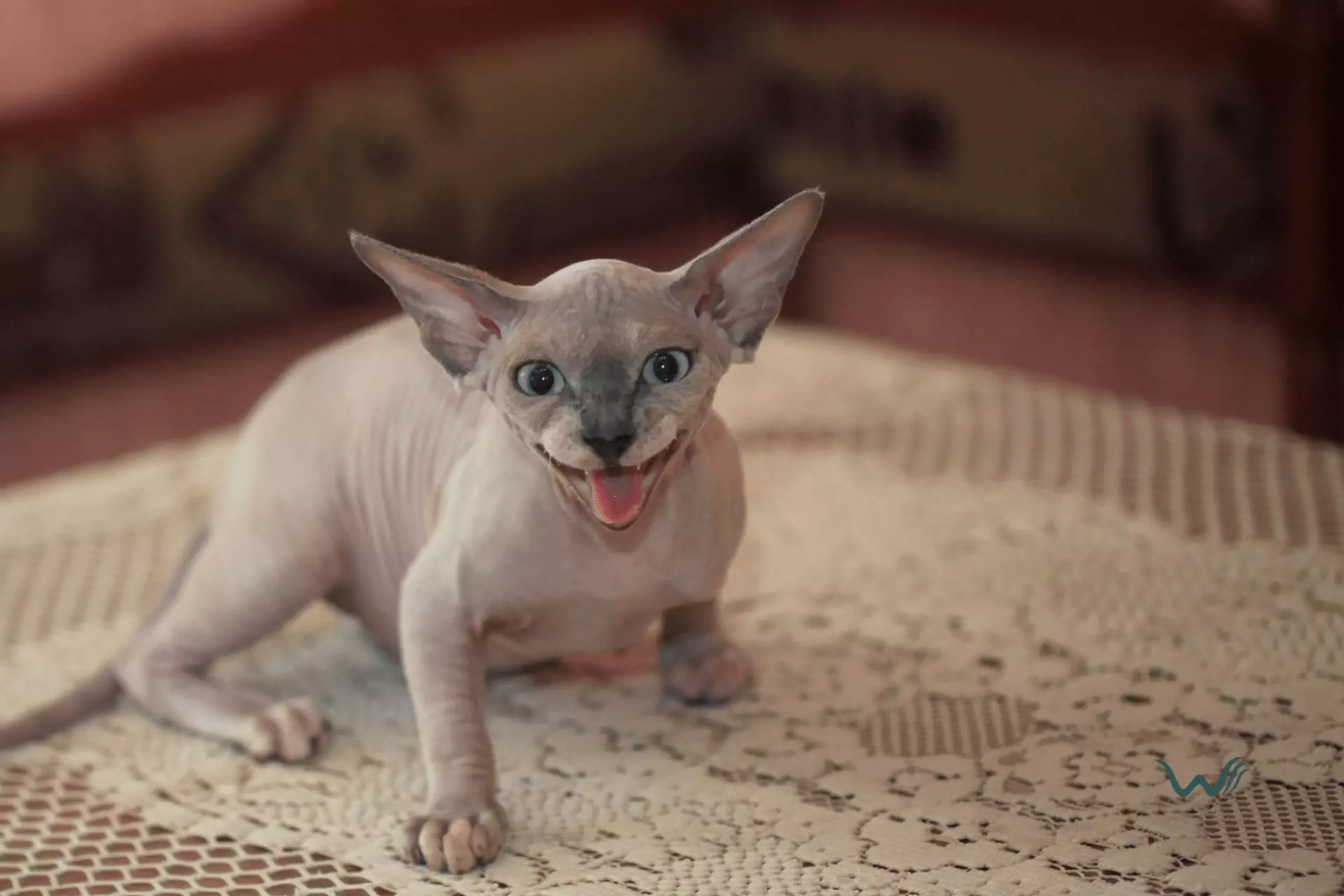

The Ultimate Guide To Hairless Dogs And Cats
by Haley Mills
Last updated: January 30, 2024
Verified and Approved by:
Angela Morris,
MSW, LCSW
Fact Checked

Are you curious about hairless dogs and cats? Whether you’re considering adopting one or just want to learn more about these unique and fascinating pets, this ultimate guide is for you. This comprehensive article will delve into the world of hairless breeds, providing valuable insights and tips on understanding their characteristics, caring for their specific needs, and embracing their one-of-a-kind beauty.
The first section will explore the different hairless breeds, discussing their origins, physical traits, and temperaments. From the elegant and regal Sphynx cats to the playful and affectionate Xoloitzcuintli dogs, we will closely examine each breed’s unique qualities. Understanding their backgrounds and personalities will help you make an informed decision if you’re considering adding a hairless pet to your family. So, get ready to embark on a journey of discovery as we unravel the mysteries of hairless dogs and cats.
Understanding Hairless Breeds
Now that you’ve learned about the different types of hairless breeds, it’s time to understand the unique characteristics and needs of these fascinating animals. Hairless dogs and cats may not have the same fur that other breeds do, but they have some distinct features that make them special. One of the most obvious characteristics of hairless breeds is their lack of fur, which means they are more prone to sunburn and cold temperatures. This means it’s important to protect their skin by applying sunscreen and dressing them in warm clothing during winter. Additionally, their lack of fur means that they may be more susceptible to skin allergies and irritations, so it’s crucial to provide them with a high-quality diet and regular grooming to keep their skin healthy.
In addition to their unique physical traits, hairless breeds also have distinct personalities. Many hairless dogs and cats are known for being affectionate and social animals. They crave attention and love to be around their human companions. However, they can also be more prone to separation anxiety, so providing them with plenty of mental and physical stimulation is important. Regular exercise and interactive toys can help keep them happy and prevent destructive behavior. Overall, understanding hairless breeds’ unique characteristics and needs is key to providing them with the best possible care and ensuring their well-being.
Care and Maintenance of Hairless Pets
To properly care for and maintain your hairless pet, you’ll need to establish a regular skincare routine. Hairless pets have sensitive skin that is prone to dryness and irritation, so it’s essential to keep their skin moisturized and protected. Start by bathing your pet with a gentle, hypoallergenic shampoo that is specifically designed for hairless breeds. Avoid harsh soaps or shampoos containing fragrances or dyes, as these can further irritate their skin. After bathing, apply a pet-friendly moisturizer or lotion to keep their skin hydrated. Be sure to choose a product that is free of harmful ingredients and safe for your pet to lick off.
In addition to regular bathing and moisturizing, hairless pets require regular sunscreen application to protect their skin from harmful UV rays. Like humans, hairless pets can get sunburned, leading to pain, discomfort, and even skin cancer. Look for a pet-safe sunscreen with an SPF of at least 30 and apply it to any exposed areas of your pet’s skin before going outside. Provide your hairless pet with a warm and comfortable environment, as they are more susceptible to cold temperatures. Consider investing in cozy sweaters or blankets to help keep them warm, especially during the colder months. These steps will help ensure your hairless pet stays healthy and comfortable.
Common Health Concerns for Hairless Animals
Make sure you take extra care of your hairless pet’s health by being aware of common concerns they may face. One of the most common health issues for hairless animals is sunburn. Hairless pets are more prone to sunburn and skin damage without fur to protect their skin. It is important to provide them ample shade when they are outside and apply sunscreen specifically designed for pets to their exposed skin. Regular veterinary check-ups are also essential to catch any potential skin problems early and to ensure overall health.
Another common concern for hairless pets is acne. Just like humans, hairless animals can develop acne, especially on their chins and around their mouths. Various factors, such as hormonal imbalances or allergies can cause this. Regular skin cleaning with a gentle cleanser can help prevent acne breakouts. Additionally, keep their bedding and environment clean to minimize bacteria buildup. If your hairless pet develops persistent acne, it is recommended to consult with a veterinarian for proper treatment options.
Taking care of the health of your hairless pet requires a little extra attention and awareness. By being proactive in protecting their skin from sunburn and addressing any acne concerns, you can ensure that your hairless pet stays happy and healthy.
Choosing the Right Hairless Pet for You
Finding the perfect hairless pet for you starts with understanding what you’re looking for in a companion. Hairless dogs and cats come in different breeds and sizes, so consider your lifestyle and preferences before deciding. Are you looking for a small lap dog or a larger, more active breed? Do you have the time and energy to dedicate to a high-energy pet, or are you looking for a more low-maintenance companion? These are all important factors to consider when choosing the right hairless pet for you.
Once you have an idea of what you’re looking for, it’s time to do some research on the different breeds of hairless dogs and cats. Each breed has its own unique characteristics and temperaments, be sure to find one that aligns with your lifestyle. Some hairless breeds are known for being more affectionate and cuddly, while others are more independent and aloof. Additionally, some breeds require more grooming and maintenance than others, so consider how much time and effort you’re willing to put into caring for your pet’s skin and coat. By taking the time to research and understand the different breeds, you can make an informed decision and find the perfect hairless pet that will bring you joy and companionship for years to come.
Can the Topicals Used for Horse Skin Issues Also Be Used for Hairless Dogs and Cats?
When it comes to addressing skin issues in hairless dogs and cats, it’s important to use the best topicals for horse skin issues. These topicals are typically safe and effective for a variety of animals, providing relief from common skin problems such as itching, irritation, and minor injuries.
Embracing the Unique Beauty of Hairless Pets
Imagine embracing the unique beauty of hairless pets and discovering the joy they bring to your life. Hairless dogs and cats may not have fur like their counterparts, but their striking and captivating appearance sets them apart. Their smooth and velvety skin, often adorned with wrinkles or spots, creates an undeniably beautiful one-of-a-kind aesthetic. Whether it’s the elegant grace of a hairless Sphynx cat or the playful and energetic nature of a hairless Chinese Crested dog, these unique creatures have a charm that is hard to resist.
In addition to their physical beauty, hairless pets also have a special way of forging deep connections with their owners. Without a coat of fur to hide behind, these pets rely on their endearing personalities and affectionate nature to win over hearts. They crave human companionship and are often described as social and loving. The bond between a hairless pet and their owner is often incredibly strong, and the joy and happiness they bring into their owner’s life is immeasurable. Embracing the unique beauty of hairless pets is not just about their appearance, but also about the love and companionship they offer, making them an exceptional addition to any household.
Frequently Asked Questions
Are hairless pets more prone to allergies compared to other breeds?
Hairless pets are not necessarily more prone to allergies compared to other breeds. Various factors can trigger allergies, and it is important to consider individual sensitivities rather than solely focusing on hairlessness.
Can hairless cats or dogs be exposed to direct sunlight?
Hairless cats and dogs can be exposed to direct sunlight, but precautions should be taken. Their lack of fur makes them more susceptible to sunburn and overheating, so providing shade and using pet-safe sunscreen is important.
How often should I bathe my hairless pet?
Hairless pets should be bathed once every 1-2 weeks to keep their skin clean and free from oil build-up. This frequency helps prevent skin issues and maintains their natural moisture balance.
Are hairless pets more susceptible to skin infections?
Yes, hairless pets are more susceptible to skin infections due to their lack of fur. Without hair to protect the skin, it is more vulnerable to irritations, bacteria, and other environmental factors.
Do hairless pets require special diets or nutritional supplements to maintain their health?
Hairless pets, like hairless dogs and cats, do not require special diets or nutritional supplements to maintain their health. However, provide them with a balanced and nutritious diet to support their overall wellbeing.
Certify Your Emotional Support Animal Today

Why You Can Rely on Us?
At Wellness Wag, we believe your pet deserves care rooted in both science and compassion. Each article is carefully researched, written in clear language for pet owners, and then reviewed by qualified professionals to ensure the information is evidence-based, current, and practical for real-life care. Our goal is to help you feel confident in making informed decisions about your pet’s health and well-being.
Reviewed by
Angela Morris, MSW, LCSW
Angela is a licensed clinical social worker with 20 years of experience in patient advocacy and community mental health. She has assisted numerous clients with ESA evaluations and brings a deep understanding of disability accommodations, ensuring that all information is accurate, supportive, and practical.

Written by :
Haley Mills
Last Updated :
January 30, 2024










